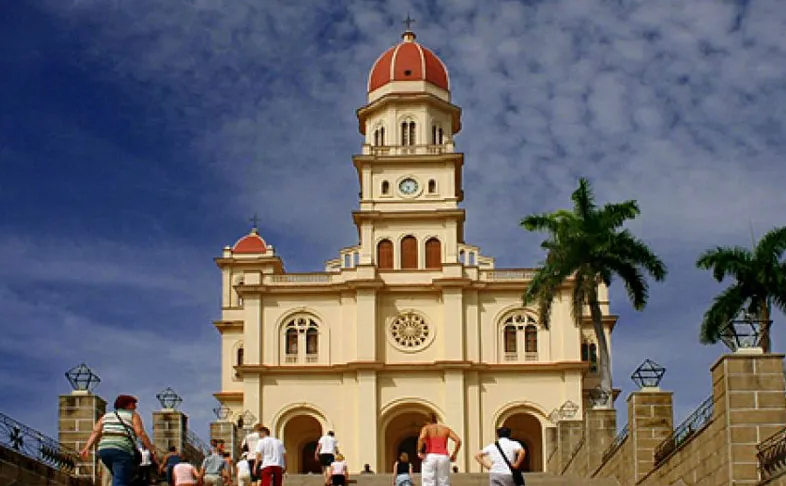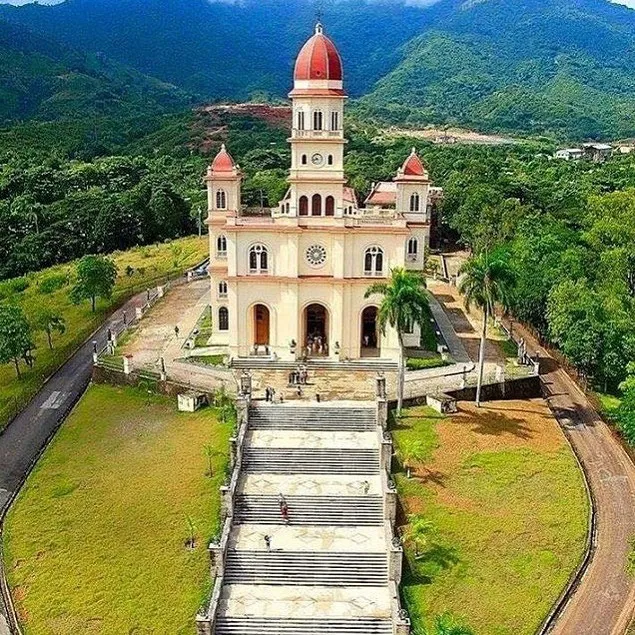
Introduction
National Shrine Basilica of Our Lady of Charity is a Roman Catholic minor basilica dedicated to the Blessed Virgin Mary located in Santiago de Cuba, Cuba.
It was built in 1926 in the village of El Cobre about 12 miles west of Santiago de Cuba. It is a 3 aisled church on the hill “Cerro de la Cantera” and is linked to the village by a flight of 254 steps. It has a central bell tower and two side towers crowned by red-brick domes.
The Basilica is under the circumscription of the Roman Catholic Archdiocese of Santiago de Cuba. The basilica was decreed on December 22, 1977.
Stunning as it materializes above the village of El Cobre, Cuba’s most revered religious site shimmers against the verdant hills behind. Recently renovated – along with many other of Cuba’s churches – the church’s interior is impressive: light, but not ostentatious with some vivid stained glass. The existing basilica dates to 1927, though a sanctuary has existed on this site since 1648. There’s an unending line of pilgrims, many of whom will have traveled from as far as the United States.
Visitors maintain a respectful silence and light prayer candles. La Virgen resides in a glass case high above the altar. For such a powerful entity, she’s absolutely diminutive, some 40 cm from crown to the hem of her golden robe. Check out the fine Cuban coat of arms in the center, a wondrous work of embroidery.
History of Our Lady of Charity, Santiago de Cuba
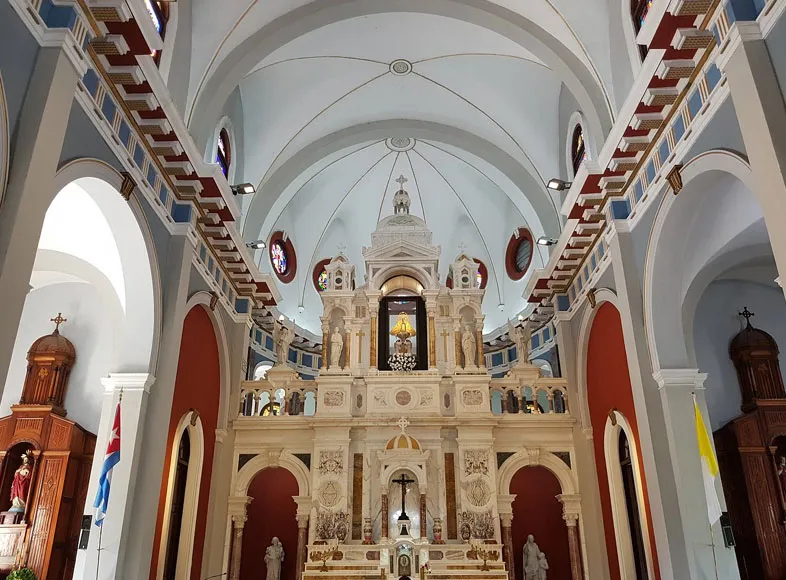
Basilica of Our Lady of Charity, Santiago de Cuba treasures attractive, wonderful, historical, patrimonial, and cultural places that increase Cuba’s reputation. Its citizens share this emotional and friendly feeling intrinsic to the people of this land.
The National Shrine Basilica of Our Lady of Charity of El Cobre excels among many others since it gathers thousands of visitors each year from all around the country and other places of the world. The Basilica has gained greater visibility these days because Pope Francis will celebrate a Mass there next September 22nd.
In a trip to Santiago de Cuba, when you go by El Cobre, 22 km away from the country’s second largest city, the church looks like a postcard embedded in the mountains, thanks to its natural beauty, and such tangible and spiritual heritage that make it unique. During his visit to the island in 1998, the Pope John Paul II crowned and praised the image of the Virgin in the third mass he celebrated in Cuba, held in the Revolution Square Antonio Maceo, on January 24th.
On March 26th, 2012, Pope Benedict XVI awarded the city with the Golden Rose on the occasion of the ceremony for the 400th anniversary of the finding of the Virgin of the Charity’s image. With the arrival of Pope Francis on September 21st, the sanctuary will become one of the few privileged places in the world to have welcomed the last three Popes.
The Bishop of Rome will find a respectful, noble, and helpful people. Cuba has also had magnificent men who showed huge love for the country and God, and they were examples of the Cuban ethnicity: Father Varela, Jose de la Luz y Caballero, and Jose Agustin Caballero. El Cobre settlement gained prominence in the years 1604 to 1613 after two Indians and a Creole Negro found the image of the Virgin of the Charity floating at the North Eastern Sea of Cuba.
The episode, narrated under Ecclesiastic oath by Juan Moreno, known as “el negrito de La Caridad (the little negro of the Charity)”, tells the story of how he and two of his Indian brothers (Juan and Rodrigo de Hoyos) were in a canoe looking for salt. When they were leaving the French Key (Nipe Bay) they saw something floating at the sea and much to their surprise, they realized it was the Virgin of the Charity image.
From that moment on, the worship fused with the spirituality of native people and transcended the whole country. According to old documents kept at the General Archive of the Indies, the arrival of the image of the Virgin of Charity (Virgen de la Caridad) in the mountain range of El Cobre took place when artillery captain Francisco Sanchez de Moya received a mandate from King Philip II in May 1597 commanding him to go to the mines to defend those coasts from the attacks of British pirates.
Following those events, the king ordered him to build a small church, where soldiers and miners could go to entrust themselves and to pray to the venerated image. The Sanctuary of El Cobre is one of the most revered religious sites by the Cuban people. Coming from different territories of the nation, believers seek the spiritual comfort, the solution to their longings and problems that affect humans.
It is said that in 1915 the veterans of the War of Independence wrote to Pope Benedict XV requesting him to proclaim the Virgin of Charity as Patroness of Cuba, and this came true on May 10, 1916. Pope Pius XI authorized the canonical coronation of the holy image and on the morning of December 20, 1936, the then Archbishop of Santiago de Cuba, Monsignor Valentin Zubizarreta carried out the investiture.
At the beginning, the sanctuary was built from palm tree leafs and wood. After a number of mysterious incidents surrounding the image, it was taken to what would be its final temple, a short distance away, on the top of a hill close to the copper mines. Located on the headland of Santiago del Prado, it has three naves, with a symmetrical main façade. Its central structure ends in a dome and its lateral naves are topped by towers featuring steeples at a lower level.
Its first chapel collapsed in 1906 due to explosions and excavations in the mines. The Sanctuary of El Cobre was proclaimed as Basilica on December 22, 1977 by Pope Paul VI. The current temple, which offers mass every morning was inaugurated on September 8, 1927 and has an altar of solid silver and other ornamental objects of great value.
The temple houses the so-called Chapel of Miracles, a small room where believers place their offerings. An outstanding event in that extent is that renowned US writer Ernest Hemingway offered that deity his Nobel Prize in Literature. He said then he did so in recognition to the Cuban people, who inspired his work “The Old Man and The Sea”, which earned him the award in Stockholm.
Our Lady of Charity
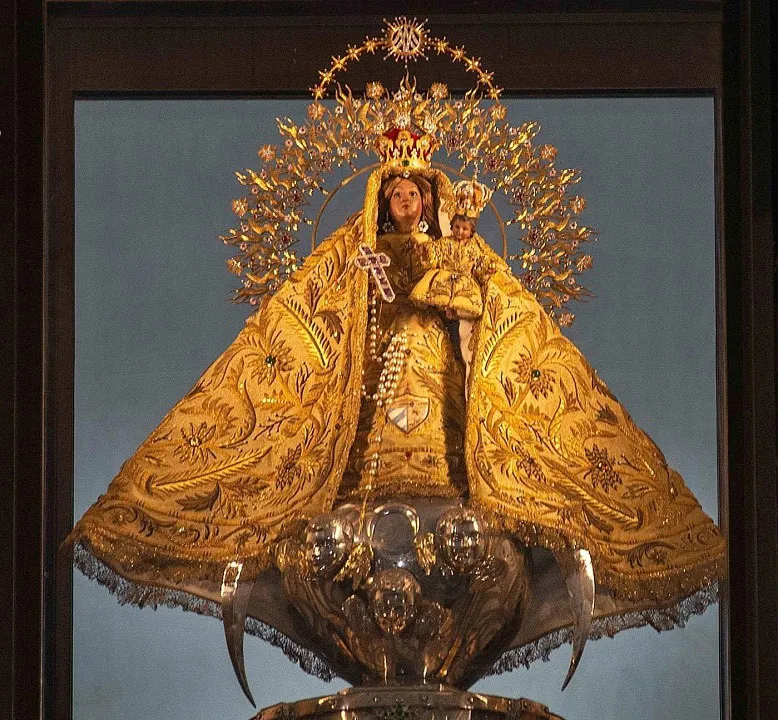
Our Lady of Charity, also known as Our Lady of El Cobre, Nuestra Señora de la Caridad del Cobre or “la Vírgen de la Caridad”, is a popular Marian title of the Blessed Virgin Mary known in many Catholic countries.
Several known Marian images with the same title exist around the world while a particular Hispanic image is pontifically designated by Pope Benedict XV as the Patroness of Cuba. This image of the Madonna and Child is enshrined in the National Shrine Basilica of Our Lady of Charity of El Cobre, built in 1926 and situated in the village El Cobre, near Santiago de Cuba. Pope Pius XI granted a Canonical Coronation for the image on 20 December 1936.
Various similar Marian images predating the Cuban image have a similar title as well as having been granted a canonical coronation by the Popes and can be found in the Spanish cities of Cartagena, Villarrobledo, Illescas, Loja, La Garrovilla, and Toledo, Spain along with its replicated copies in Basilica Minore of Our Lady of Charity in Agoo, and the image of Bantay Church in Ilocos Sur, Philippines.
History of Our Lady of Charity
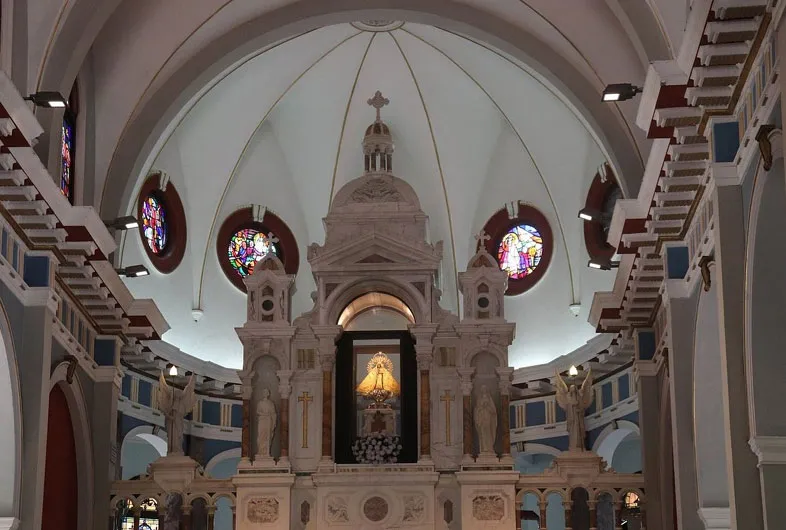
The history of the La Vírgen de la Caridad del Cobre, began around 1612. The image is thought to have been brought by Spaniard colonists from the town of Illescas, a province in Toledo, Spain where a similar statue of the Virgin Mary of Charity was already well-venerated.
Local legend recalls the Spanish captains who bring with them religious Marian images to guide and protect them from English pirates at sea. Two Native American or Indian brothers, Rodrigo and Juan de Hoyos, and an African slave child, Juan Moreno, set out to the Bay of Nipe for salt. They are traditionally given the moniker the “three Juans”. They needed the salt for the preservation of the meat at the Barajagua slaughter house, which supplied the workers and inhabitants of Santiago del Prado, now known as El Cobre.
While out in the bay, a storm arose, rocking their tiny boat violently with incoming waves. Juan, the child, was wearing a medal with the image of the Virgin Mary. The three men began to pray for her protection. Suddenly, the skies cleared, and the storm was gone. In the distance, they saw a strange object floating in the water. They rowed towards it as the waves carried it to them. At first they mistook it for a bird, but quickly saw that it was what seemed to be a statue of a girl.
At last they were able to determine that it was a statue of the Virgin Mary holding the child Jesus on her left arm and a gold cross in her right hand. The statue was fastened to a board with an inscription saying “Yo Soy la Vírgen de la Caridad” or “I am the Virgin of Charity.” Much to their surprise, the statue remained completely dry while afloat in the water.
Overjoyed by what they had discovered, they hurried back to Barajagua. They showed the statue to a government official, Don Francisco Sánchez de Moya, who then ordered a small chapel to be built in her honor. One night, Rodrigo went to visit the statue, but discovered that the image was gone. He organized a search party, but had no success in finding Our Lady of Charity. Then, the next morning, she was back on the altar, as if nothing had happened. This was inconceivable as the chapel had been locked.
This event happened three times. The people of Barajagua came to the conclusion that she wanted to be in a different spot, so they took her to El Cobre. She was received with much joy in El Cobre, and the church there had its bells ring on her arrival. It was at this point that she became known as “Nuestra Señora de la Caridad del Cobre” or “Our Lady of Charity of El Cobre”. Much to the dismay of people in El Cobre, the disappearance of the statue continued to happen.
One day, a young girl named Jabba was playing outside, pursuing butterflies and picking flowers. She went towards the mountains of the Sierra Maestra, where she came across the statue on top of a small hill. There were those who did and those who did not believe the little girl’s testimony, but in the end, the Virgin was taken to the spot of her discovery, where a church was erected for her.
Before the famous image on 19 May 1801, a royal edict from king Charles IV of Spain decreed that Cuban slaves were to be freed from the El Cobre copper mines.[citation needed] The story circulated around the island quickly. Many felt that the Virgin purposely chose to have her sanctuary in El Cobre because it is located in Oriente Province. Later folk legends associated the taking of copper materials to their homes after having it blessed near the Virgin’s sanctified image as a form of souvenir and miraculous healing.
Description
The Cuban statue venerated measures about 16 inches tall; the head is made of baked clay covered with a polished coat of fine white powder. Her feet rest on a brilliant moon, while angels spread their golden wings on a silver cloud. The child Jesus raises his right hand as in a blessing, and in his left hand he holds a golden globe.
A popular image of Our Lady of Charity includes a banner above her head with the Latin phrase “Mater Caritatis Fluctibus Maris Ambulavit” (Mother of Charity who walked on the road of stormy seas). Originally, the robes on the image were white in color. Newer robes are embroidered with gold and silver, which includes the national shield of Cuba. Among Cuban religious devotees, the image is given the familiar title of La Cachita.
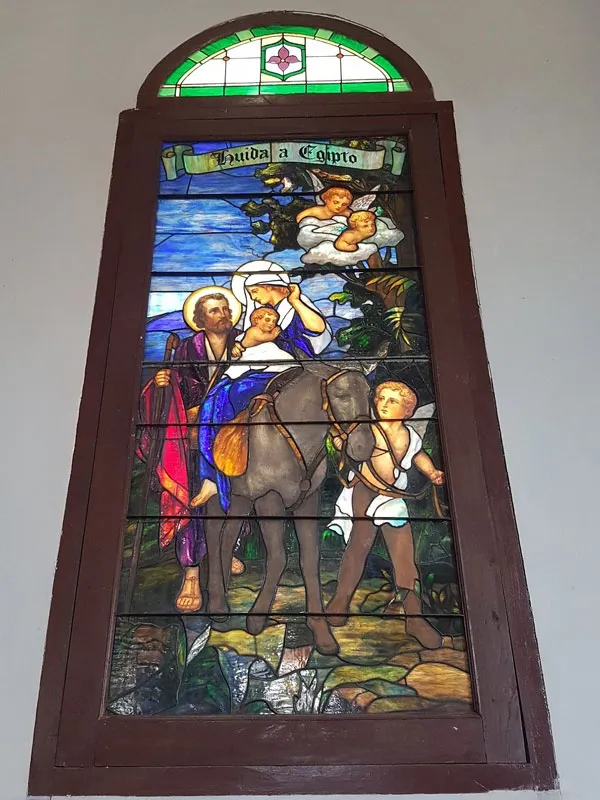
Pontifical Approbations
Cuban revolutionary leader Carlos Manuel de Céspedes presented the Cuban banner to the image along with his soldiers who wore a similar medal while Cuban general Calixto Garcia bowed at the image during a Holy Mass in honor of Mambises resistance. Our Lady of Charity acquired the title La Vírgen Mambisa or the Virgin for Cuban Independence.
On 24 September 1915 the Cuban revolutionaries wrote a letter petitioning the Pope Benedict XV to honor her as Patroness of their country.
- Pope Benedict XV declared Our Lady of Charity of El Cobre Patroness of Cuba on 10 May 1916 at the written request of the soldier veterans of the Cuban War of Independence.
- Pope Pius XI granted a Canonical Coronation for the image during the Eucharistic Congress at Santiago de Cuba on 20 December 1936 by Monsignor Valentin Zubizarreta y Unamunsaga.
- Pope Paul VI, in his Papal bull Quanto Christifideles then raised her sanctuary to the category of Minor Basilica on 22 December 1977 through the appointed Papal legate Cardinal Bernardin Gantin.
- Pope John Paul II solemnly crowned her again during his apostolic visit on 24 January 1998.
- Pope Benedict XVI awarded a Golden Rose in honor of the image and her shrine on 27 March 2012.
- Pope Francis enshrined a brass statue given to Pope Benedict XVI by Cuban bishops (in May 2008) within the Gardens of Vatican City in August 2014, then enshrined in 2016 at the 13th slot.
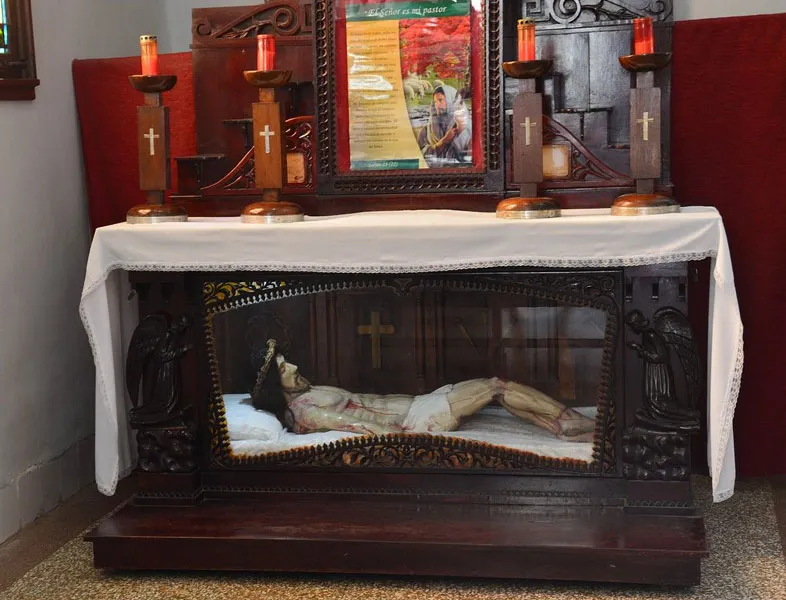
Veneration
The statue stands on a pedestal behind glass above the altar in the El Cobre basilica. The statue represents the Blessed Virgin Mary in her capacity of the Mother of God. Devotees believe that in reverencing the image they thus pay respect to the person it signifies. The color yellow is associated with the Virgin of Charity, and her shrines are often filled with yellow flowers.
A chapel of Our Lady of Charity exists within the Basilica of the National Shrine of the Immaculate Conception in Washington, D.C.
Significance
The Virgin is one of the island’s most treasured figures, representing hope and salvation in the face of misfortune. Over time, La Cachita “has become a quintessential symbol of Cuban identity”. She unites both those at home and abroad, across lines of race and class. Wherever Cuban immigrants settled, they brought with them their devotion to la Caridad.
Emilio Cueto points out the Christian themes suggested by La Cachita: “She came to Cuba bearing the greatest of gifts—her own child—and appeared not to a priest or bishop, but to common men. She spoke not just to the aboriginal people, but also to the Spaniards, Creoles, and African slaves.” For Cubans who follow Yoruban religious practices, La Vírgen de la Caridad is syncretized with the orisha Ochún.
On his visit to Cuba in 2015, Pope Francis said, “She has accompanied the history of the Cuban people, sustaining the hope which preserves people’s dignity in the most difficult situations and championing the promotion of all that gives dignity to the human person. The growing devotion to the Virgin is a visible testimony of her presence in the soul of the Cuban people …. I will have occasion to go to El Cobre, as a son and pilgrim.”
In 1954, American author Ernest Hemingway donated his Nobel Prize in Literature medal for The Old Man and the Sea to the people of Cuba at the shrine of Caridad del Cobre in Cuba. The medal was stolen in 1986, but was recovered days later upon the threat of Raul Castro that it be returned or the thieves suffer the consequences. After its return, it was, for some time, hidden from view. The medal is very rarely present in the image and only worn during solemn and Papal occasions.
Our Lady of Charity Venerated in Other Countries
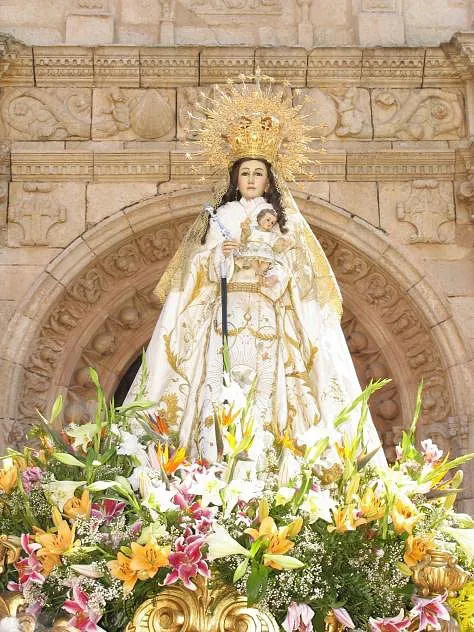
Spain
An earlier image of Our Lady of Charity predating and sourcing the Cuban image is venerated in the town of Illescas, Toledo, Spain. Legend recalls that it was copied from a “Saint Luke” image from Antioch and brought by Saint Paul the Apostle to Toledo between the year 50 and 60 A.D. From that date, the image remained when the Archbishop of Toledo Eugenius II of Toledo, who placed the image in a Benedictine monastery.
In the 16th century, the image was transferred to a local Hospital of Charity where a famed miraculous healing of paralyzed patient Francesca de la Cruz took place in 1562. During the same time, the image was revised, separating the heads and hands of the Virgin from its fully formed or detallado style, in order to allow vestments and jewels to fit the image.
The image was granted a Canonical coronation on 12 October 1955 at the orders of Pope Pius XII through the Papal legate, Cardinal Enrique Pla y Deniel. Many copies of this image was sent out into the territories in the Kingdom of Spain, one being the famous Cuban version. The image celebrated its 50th anniversary of papal recognition with a Pontifical High Mass in October 2005.
France
La Charité-sur-Loire was the home of the Abbaye de la Charité, a very large and famous Cistercian monastery. When the priory church, Notre-Dame-de-La-Charité, was built in the 11th century, it was the second largest building in Europe, only surpassed by the church at Cluny Abbey. The nave was shortened after the fire of 1559 destroyed its roof. The church has been on the list of UNESCO World Heritage Sites since 1998. It currently serves as a parish church dedicated to Notre Dame de la Nativité.
John Eudes founded the Order of Our Lady of Charity of the Refuge to give reformed prostitutes a place to go. The order survives today with many other charitable activities. Offshoot orders include both apostolic and contemplative Sisters of Our Lady of Charity of the Good Shepherd, which have now been joined back together as one order.
There was a pilgrimage chapel of Our Lady of Charity near St.-Laurent-sur-La-Plaine which was destroyed by order of the French revolutionary government in 1791. Shortly afterward, the Virgin Mary was reported to be seen on the ruined altar and in a nearby oak tree. This set off more pilgrimages and became part of the unrest leading up to the War in the Vendee.
A small one is on the altar in the newly restaured church.
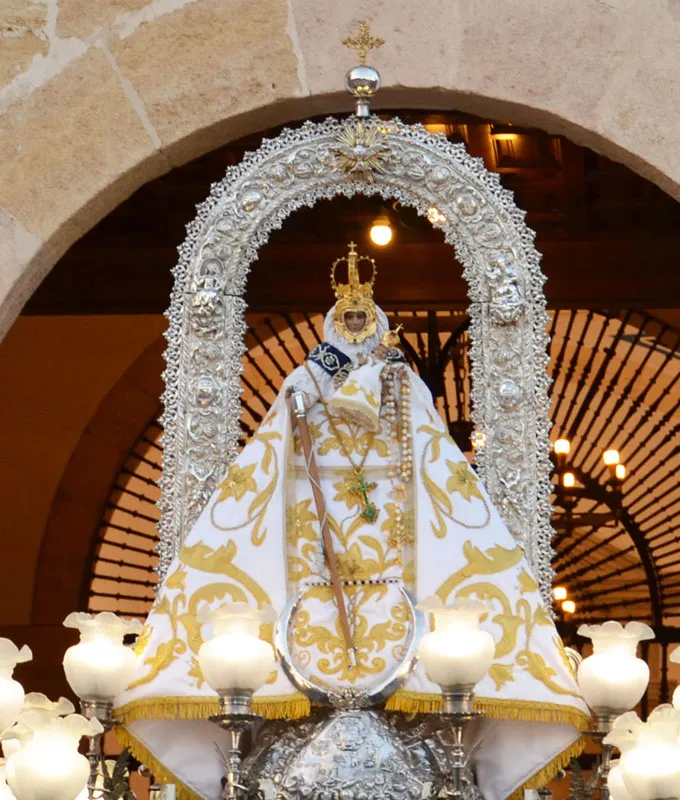
Philippines
In the Philippines, Our Lady of Charity is known by its Spanish predecessor, the original Our Lady of Lacara (circa 1494), later known as Apo Caridad in Ilocano language. The Marian title is not associated with the Cuban image, but rather the older Marian image venerated in Toledo, Spain.
Our Lady of Charity, Apo Caridad de Bantay is enshrined at the Bantay Church in Bantay, Ilocos Sur in Northern Luzon and was officially crowned by Pope Pius XII on 12 January 1956.
Another image of Our Lady of Charity is also enshrined within the Minor Basilica of Our Lady of Charity in Agoo, La Union. The image was episcopally crowned on 1 May 1971 under the Papal nuncio Carmine Rocco. It has not yet received a Pontifical decree of Canonical coronation.
United States
On 8 September 1961, the Archdiocese of Miami celebrated the feast of Our Lady of Charity with 30,000 Cuban exiles at Miami Stadium where a 16-inch replica of the statue of Our Lady of Charity was smuggled out of Cuba. Due to the overwhelming Cuban devotion to this Marian title in 1966, the Archdiocese of Miami announced the construction of the Shrine of Our Lady of Charity.
Construction was begun on the shrine, known as La Ermita de la Caridad, the following year on the shores of Biscayne Bay in the Coconut Grove section of Miami. The shrine was completed in 1973, built with donations by new Cuban exiles.
Feast Day – 12th April
The Annual Feast Day of Our Lady of Charity, Cobre, Cuba and Memorials of the Saints – 12th April. In the mountains outside Santiago in Cuba, is an old pilgrimage Church, “Nuestra Senora de la Caridad,” which means, “Our Lady of Charity,” also known as “Our Lady of Cobre.” It is the National Shrine of Cuba.
Mass Time
Mondays
Tuesdays to Fridays
Saturdays
Sundays
Church Visiting Time
Contact Info
3322+796, El Cobre, Cuba.
Phone No.
Tel : +53 22 346118
Accommodations
How to reach the Basilica
Antonio Maceo International Airport in Santiago, Cuba is the nearby airport to the Basilica.
Santiago de Cuba Railway Station is the nearby train station to the Basilica.

